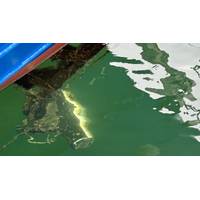
Teledyne Marine Integrates Biofouling Protection Coatings for Sonars
Teledyne Marine to announced the integration of ClearSignal, a leading biofouling protection coating, into its SeaBat and BlueView sonar equipment.This enhancement is an addition for customers who want durable, low-maintenance marine instrumentation.ClearSignal is a nonstick, inert, and nontoxic coating specially developed to combat the biofouling of marine instruments. The coating reduces the amount of biofouling material that settles on the sonar systems, reducing maintenance costs while providing long-term operating reliability.The ClearSignal coating is offered as an add-on to our products reducing
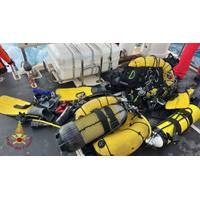
Bayesian Yacht Disaster: How Specialist Search and Rescue Teams Work Underwater
. Decompression sickness – when divers ascend too rapidly, and often known as “the bends”, is another issue. This means divers can only spend ten minutes on the wreck itself.In the case of the Bayesian, underwater ROVs were deployed, likely with live audio, lighting rigs and sonar equipment to assist with navigation and location, and minimise the risk to divers in this difficult environment. The 56m yacht was rotated onto its side, had 1.3 cm thick glass windows that were hard to break, and was full of debris that made it difficult to retrieve the missing people.The chances of
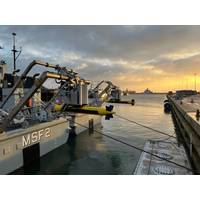
Kraken Robotics Delivers Minehunting Systems to Royal Danish Navy
Canadian company Kraken Robotics has completed deliveries and sea acceptance tests of all systems for its minehunting sonar equipment under the contract with Royal Danish Navy.The contract was signed in September 2020, following a competitive bidding process. Under the contract with the Danish Ministry of Defence Acquisition and Logistics Organization (DALO), Kraken has delivered four complete turnkey minehunting systems.Each system consists of a KATFISH towed Synthetic Aperture Sonar, Tentacle Winch and Autonomous Launch and Recovery System (ALARS), topside command and control equipment, and remote
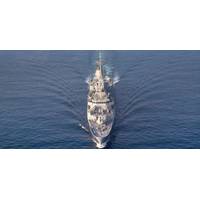
What is a Sonar Pulse and How Can it Injure Humans Under Water?
water is much denser than air, and so can respond faster and better to acoustic pressure waves – sound waves.Because of these properties, ships use sonar to navigate through the ocean and to “see” under water. The word “sonar” stands for sound navigation and ranging.Sonar equipment sends out short acoustic (sound) pulses or pings, and then analyses the echoes. Depending on the timing, amplitude, phase and direction of the echoes the equipment receives, you can tell what’s under water – the seafloor, canyon walls, coral, fishes, and of course ships and submarines
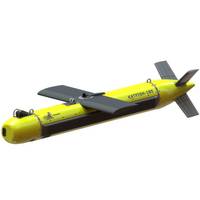
Kraken Robotics Supplies High-Resolution Seabed Mapping Sonar Solution to Australian Navy
Canadian marine robotics company Kraken Robotics said Monday it had supplied high-resolution seabed mapping sonar equipment to the Royal Australian Navy. Kraken delivered its KATFISH high-speed high-definition seabed awareness solution in Q2, and recently completed system integration and sea trials in Cairns, Australia. Kraken expects to provide additional in-service support including training, spares and operational support. "Continuing to build off successful KATFISH deliveries with various NATO navies, this represented Kraken’s first KATFISH system sale in the Asia-Pacific
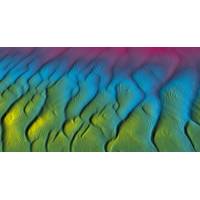
AI & Seabed Mapping Project Recognized
;s School of Computing Sciences, was named as a finalist in the category of Technical Excellence at the national Knowledge Transfer Partnership awards, following the co-development of an AI solution aimed to improve the speed and ease of real-time seabed mapping.GeoAcoustics, a manufacturer of sonar equipment for seabed mapping, approached UEA’s School of Computing Sciences, and feasibility study was first undertaken to see if AI technology could automatically remove unwanted noise from sonar data. This was carried out by two MSc Computing Science students, supervised by Dr. Wenjia Wang and
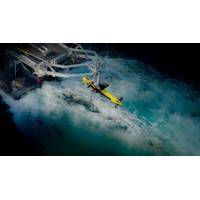
Kraken Robotics to Supply Seabed Mapping Sonar Equipment to a Navy in Asia-Pacific
Canadian marine robotics company Kraken Robotics has won a $9.5 million contract to supply high-resolution seabed mapping sonar equipment to a navy in Asia-Pacific. "The customer cannot be named at this time. Under the scope of the contract, Kraken will deliver its KATFISH™ high-speed minehunting solution. The contract also includes a variety of support and sustainment options, including training, spares and operational support," Kraken Robotics said.Under the contract, Kraken Robotics will deliver its KATFISH towed Synthetic Aperture Sonar, Tentacle Winch, and Autonomous Launch
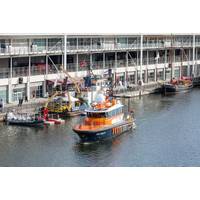
VIDEO Interview: OI ’22 is a ‘Go’ for in-person Event in London
.In addition to the welcome return of long-term Oi exhibitors such as iXblue, Kongsberg Maritime, Fugro and Teledyne Marine, the Oi22 show floor will be accommodating 83 new stands hosting companies which are exhibiting at an Oi event for the first time. These include GeoAcoustics Ltd, which supplies sonar equipment for bathymetry, side scan and sub-bottom profiling; and Blueprint Lab, which manufactures robotic arms for use in challenging subsea environments.At the center of ocean innovation and technology, Oi will showcase world first product introductions including the culmination of a four-year EU supported
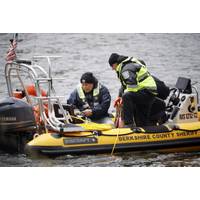
Tech File: Sonar Equipment Critical to Search and Recovery
their equipment, and begin searching sometimes vast bodies of water. Searching via divers is not only a long process, but it adds a considerable level of risk to an already dangerous assignment. One way to avoid that elevated risk is to use modern technology to help aid in the search. Side Scan Sonar technology allows a search and recovery team to scan local waterways quickly and produce a detailed image of the bottom, regardless of water clarity. JW Fishers produces both a single frequency and dual frequency side scan as well as an affordable, and highly advanced, Compressed High-Intensity Radiated


 February 2025
February 2025





